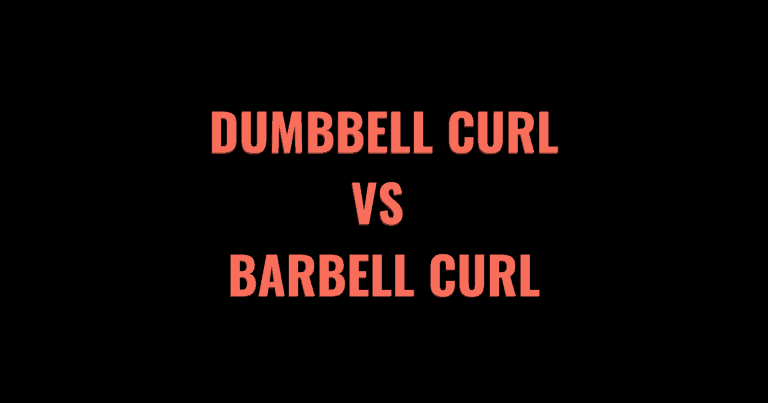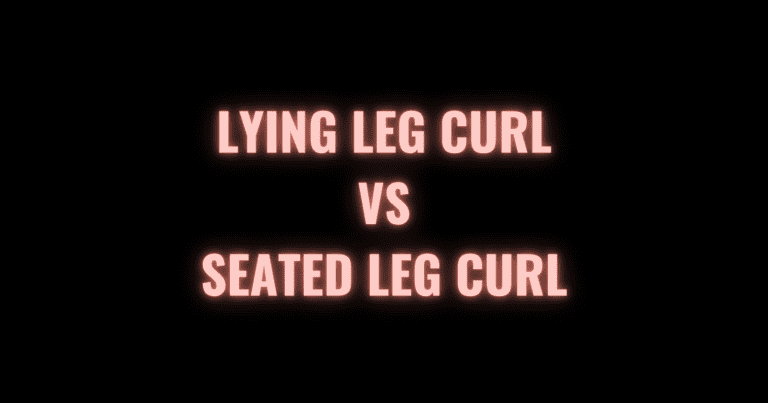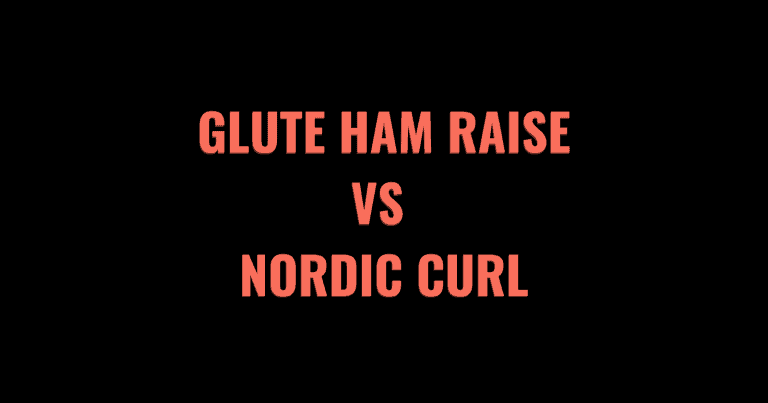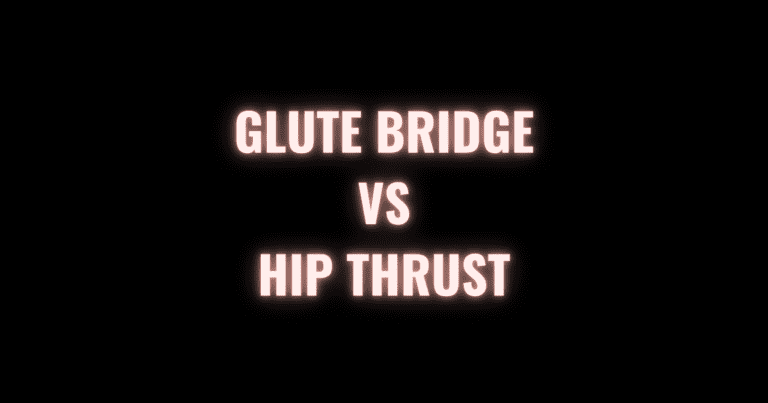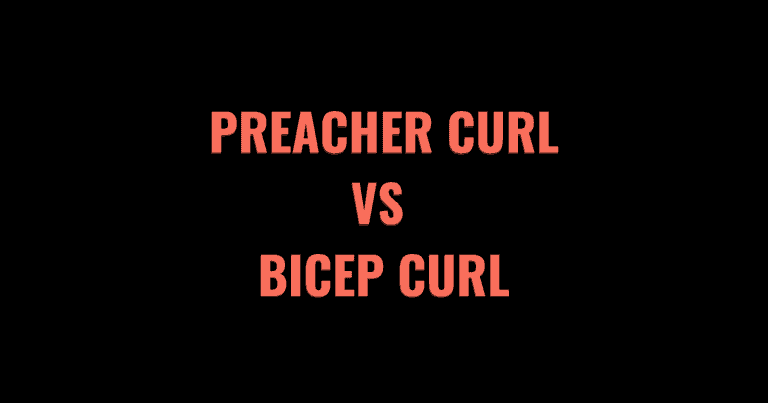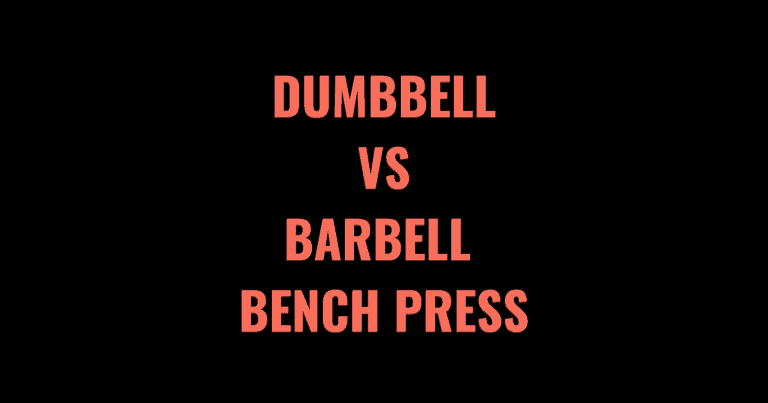Do you want to build big, strong biceps that look great and help you perform your best at the gym?
Have you been training your biceps for a while without getting the results you hoped for?
Bicep curls are among the most common upper body exercises, popular among beginner bodybuilders and experienced lifters alike.
With so many variations to choose from, it’s not easy to know which one to perform to maximize your training session.
We’ll review the key differences between two popular bicep curl variations: the concentration curl and the standard bicep curl, and help you decide which one to choose to meet your needs and achieve your strength and muscle-building goals.
Table of Contents
- 1 Concentration Curl vs. Bicep Curl
- 2 Concentration Curl vs. Bicep Curl: Pros and Cons
- 3 Concentration Curl vs. Bicep Curl – When to do an exercise
- 4 Concentration Curl vs. Bicep Curl – Muscles Used
- 5 Form Differences
- 6 Helpful Form Cues
- 7 Common Form Mistakes
- 8 Frequently Asked Questions
- 9 Other Exercise Comparison Posts
- 9.1 Rack Pulls vs. Deadlifts: Differences, Pros, and Cons
- 9.2 Floor Press vs. Bench Press: Pros, Cons, and Differences
- 9.3 Barbell Curl vs Dumbbell Curl: Benefits & Differences
- 9.4 Lying Leg Curl vs Seated Leg Curl: Pros & Cons
- 9.5 Tricep Extension vs Skull Crusher: Pros and Cons
- 9.6 Glute Ham Raise vs Nordic Curl: Differences and Benefits
- 9.7 Glute Bridge vs Hip Thrust: Differences & Benefits
- 9.8 Preacher Curl vs Bicep Curl: Differences, Pros, and Cons
- 9.9 Dumbbell vs Barbell Bench Press: Differences and Pros & Cons
- 9.10 Flat vs. Incline Bench Press: Which is Better?
- 9.11 Romanian Deadlift vs Deadlift: Which is Better?
- 9.12 EZ Curl vs Straight Bar Curls: Differences, Pros, and Cons
Concentration Curl vs. Bicep Curl
What is the main difference between a concentration curl and a bicep curl?
Concentration curls emphasize the short head of the biceps, while bicep curls target the long and short head of the biceps more evenly. Concentration curls train the bicep in a shortened position and produce a stronger contraction of the peak of the bicep. Bicep curls allow you to lift heavier weights and are more convenient as they allow you to train both arms simultaneously.
The main technical difference between a concentration curl and a standard bicep curl is your starting position. Concentration curls are performed in a seated position, with the elbow of the working arm supported against the inside of your leg for stability and support. Concentration curls are usually performed unilaterally (one arm at a time), with the peak of the bicep facing inward.
While standard dumbbell bicep curls can be done from a seated position, they are usually performed standing and holding a dumbbell in each hand, with the palms and peak of the bicep facing forward.
Concentration Curl vs. Bicep Curl: Pros and Cons
Both variations of dumbbell bicep curls isolate the biceps and activate the muscles to increase their strength and size. Both exercises require each arm to work independently to lift the dumbbell towards the body, effectively evening out muscular imbalances. The concentration curl and the standard bicep curl have specific pros and cons that may make one a better choice for you, depending on your goals.
Concentration Curl Benefits
Here are some of the advantages of concentration curls.
- Better activation and isolation of the biceps. Compared with a traditional dumbbell bicep curl, the concentration curl is more effective at activating the biceps brachii. Because the elbow of the working arm leans against the inner leg, the bicep alone lifts the weight. In a standard bicep curl, the upper arm can sway to lift the weight, recruiting the anterior deltoid and brachioradialis and shifting the emphasis away from the biceps.
- Concentration curls train the biceps in a shortened position. Concentration curls have a specific movement pattern and range of motion that loads the bicep in a shortened position. This movement forces the muscle to contract repeatedly, giving the muscle a great stimulus and creating an impressive bicep pump.
- Helpful for improving mind-to-muscle connection. Concentration curls were given their name for a reason: they are performed one arm at a time, in a seated position, with your arm locked in place and your gaze looking at the dumbbell you are lifting. This focussed attention helps you zone in on the muscle you are engaging and concentrate on squeezing the bicep to initiate the lift.
- Effective at activating the short head of the bicep. The concentration curl creates a significant muscular strain at the top range of the rep, engaging the short head of the biceps brachii, which is located on the inner arm. This helps to create a wider and fuller-looking bicep.
Concentration Curl Drawbacks
Here are some of the drawbacks of concentration curls.
- Less activation of supporting muscles. Although the concentration curl is great at isolating the biceps, there is less engagement of stabilizing muscles such as the anterior deltoid and brachioradialis. This drawback makes it a less effective exercise for overall functional strength or as an accessory to improve your compound lifts.
- Not as effective for lifting maximum weight. The concentration curl is more commonly used to train in the mid-high rep range, using a slightly lower weight than a standard dumbbell curl. The lesser weight is because there is less support from other muscles in the upper body, meaning all the load is placed directly onto the biceps brachii.
- Can strain the lower back. The seated position of the concentration curl requires you to lean forward as you curl the weight. If you have limited mobility or weak core muscles, this can cause discomfort or strain in the lower back.
Bicep Curl Benefits
Here are some of the advantages of bicep curls.
- Better for lifting heavier weights. Traditional standing bicep curls allow you to recruit stabilizing muscles in the core and upper arms to lift the weight. Most lifters will be able to lift more weight in a traditional bicep curl than in a concentration curl.
- Less strain on the lower back. Bicep curls can be done seated or standing, allowing you to choose a position that is most comfortable for you. Without the need to bend your torso over as you do in the concentration curl, the bicep curl may be a more safe and more comfortable variation for your body.
- Activates the short and long head of the biceps. The starting position for a standing bicep curl has your palms facing forward and your arms resting at your sides. This exercise requires a greater range of motion and is more effective at targeting both heads of the biceps brachii compared to the concentration curl which emphasizes the short head of the bicep.
- Might translate better to functional and compound movements. The bicep curl recruits the anterior deltoid and the brachioradialis to support and stabilize the exercise. Building strength in the entire upper arm, not just the biceps brachii, can yield better results for functional training and compound lifts.
Bicep Curl Drawbacks:
Here are some of the drawbacks of bicep curls.
- Less isolation of the biceps brachii. Standing dumbbell curls allow more movement of the upper body without the working arm braced against your thigh. For some lifters, this can lead to swaying the arms or generating momentum to lift the weight. The use of momentum will take some of the load away from the biceps.
- Requires greater balance and stabilization. If you perform a standing dumbbell curl bilaterally, meaning you lift a weight in both arms at the same time, you will need to engage stabilizing muscles to remain balanced. As the weight increases, you may find your progression limited by your ability to balance the dumbbells.
- Requires a wider range of dumbbell sizes. To continue progressing in your bicep curl, you need access to a wide range of dumbbells in increasing weights. If you train both arms at a time, you will need two of each of these incrementally bigger dumbbells which can take up a lot of gym floor space. Those working with limited equipment may find themselves hitting a plateau without the equipment needed to break through it.
Concentration Curl vs. Bicep Curl – When to do an exercise
When to do a concentration curl
If you want to isolate the biceps and improve your mind-to-muscle connection, the concentration curl should be a staple in your lifting program. Concentration curls are great for lifters wanting to max out their reps and get an impressive bicep pump, as the position of the arm eliminates any supporting muscles from stepping in to assist the lift.
When to do a bicep curl
If you want to lift heavier weight overall or increase your balance and stability, the dumbbell curl might better suit your needs. Suppose the bent-over position of a concentration curl causes discomfort in your back, or you want to target the deltoid, brachioradialis, and bicep. In that case, the standing dumbbell curl could be preferable as it is more adaptable and holistic in the way it engages the upper body muscles.
Concentration Curl vs. Bicep Curl – Muscles Used
Dumbbell curl variations are classified as upper body pulling movements that primarily target the biceps brachii. The biceps brachii make up about one-third of your upper arm and are composed of two heads – the long head (located on the outer side of your upper arm) and the short head (located on the inner side of your arm, closer to your torso). The concentration curl engages the short head slightly more, while the standing dumbbell curl activates both heads more evenly.
Both types of bicep curl also engage secondary muscles to assist and stabilize the exercise.
Concentration Curl Muscles Used
Concentration curls
- Primary: Short head of the Biceps Brachii, Long head of the Biceps Brachi
- Secondary: Brachioradialis, Brachialis, Forearm Flexors
Bicep Curl Muscles Used
Bicep curls
- Primary: Long Head of the Biceps Brachii, Short Head of the Biceps Brachii
- Secondary: Brachioradialis, Brachialis, Deltoid, Wrist Extensor Muscles, Wrist Flexion Muscles, Forearm Flexors Abdominals
Form Differences
Standing dumbbell curls and concentration curls target similar muscle groups but have important technical and form differences. Concentration curls are usually performed one arm at a time, sitting down with your working arm propped against your elbow. Standing dumbbell curls are done either one arm at a time or working both arms simultaneously. Below are the steps to performing each of these dumbbell curl variations with the correct technique.
How to do a concentration curl with proper form
- Grasp your dumbbell with an underhand (supinated) grip with the arm you will use for your first set. In single-sided exercises, it can be helpful to start with your weaker arm first.
- Sit down on a bench with your feet planted and your knees apart to create space for the dumbbell to move.
- Tilt forward at the waist to lean over your legs and brace the tricep of the working arm against your inner thigh.
- Use your non-working arm to hold your opposite leg for additional support and stability.
- Keep the palm holding the dumbbell facing forward and breathe out as you squeeze the biceps to bring the weight towards you.
- Lift the dumbbell until your hand is close to the front of your shoulder and your bicep reaches maximum contraction.
- Hold for a moment. Breathe in as you slowly release the barbell back to a fully extended position. Ensure the arm remains braced so you don’t hyperextend at the bottom of the lift.
- Repeat for the desired number of reps and then repeat on the opposite arm.
For a visual aid, check out this video demonstrating the correct form for a dumbbell concentration curl.
How to do a bicep curl with proper form
There are a few ways to perform your sets of standing dumbbell bicep curls. You can do one set per arm, completing the total reps before switching sides.
You can alternate arms for each rep until you have completed the desired number of reps per arm.
Alternately, you can lift both dumbbells at the same time to train both arms simultaneously. This helpful video shows the correct technique for an alternating standing dumbbell bicep curl. The form cues and movement pattern still apply regardless of how you structure your reps and sets.
- Stand tall with a neutral spine and hold a dumbbell in each hand with your arms at your sides.
- Hold the dumbbells so that your palms face forward. Tuck your elbows in close to the body and lock them into position so that they don’t swing or move around during your set.
- Take any slack out of the dumbbells by actively gripping the dumbbell so that the wrists and forearms are engaged and the tension is all in the biceps.
- Breathe out and engage your core as you squeeze your biceps to curl the dumbbells up towards your biceps.
- Hold for a second at the point of maximal contraction – when your forearms are touching or almost touching your biceps.
- Breathe in as you slowly lower the dumbbells back to their starting position at your sides. Flex the triceps to ensure maximum extension.
- Reset and repeat for the desired number of repetitions.
Helpful Form Cues
Concentration curl form cues
- Lock your working arm in place. Get the most out of your concentration curl by ensuring your arm is properly locked into place. Dig the outside of the upper arm you are curling into your inner thigh, around the tricep just above the elbow. Make sure the position is comfortable and one you can maintain throughout the set so that only your forearm is moving.
- Maintain a slight internal rotation. As opposed to a standard curl where your palms face out in front of you, in a concentration curl, your working arm should face inwards. Your working bicep should almost be facing your opposite leg, with your pinkies rotated to maintain the supination of the arm and maximize bicep engagement.
- Lower the weight slowly. The support of the leg propping up the working arm can give some lifters a false sense of safety, causing them to start speeding up the reps. Not only is this less effective as it reduces time under tension, but it can also lead to dropping the weight too quickly and overextending at the elbow. Squeeze the biceps with force to lift the dumbbell, and lower it slowly and with control.
Bicep curl form cues
- Control the eccentric. Dumbbell bicep curls are great for moving the weight through an extended range of motion. Get the most out of the exercise by slowing down the lowering phase of the lift to give the muscle fibers more time under tension.
- Keep the hands and wrists active. Be careful to keep some tension in the wrists and hands, especially at the top of the exercise and in the lift’s lowering (eccentric) phase. Relaxing your hands too much reduces the mechanical tension on the bicep and may cause pain or injury in the wrist.
- Keep your core active. Your torso should remain stationary throughout your set. Standing dumbbell bicep curls are more taxing on the core to balance and stabilize the weight in either hand. Keep your abdominals active to avoid swaying the body to ‘swing’ the dumbbells upwards.
Common Form Mistakes
Concentration curl form mistakes
- Not moving through a full range of motion. The most muscle activation in a concentration curl takes place at the top of the lift when the hand is closest to the shoulder. Skipping this part of the movement to do partial reps at the bottom phase of the lift will eliminate much of the muscle activation and potential for strength and size gains.
- Overextending the elbow at the bottom of the lift. If you release the weight back down too quickly, you risk overextending the elbow and straining or injuring the joint. Lower the dumbbell with control and stop when the elbow is straight but not hyperextended.
- Not maintaining constant tension. Maintain bicep activation for the entire set by not letting the weight ‘hang’ at the bottom of each rep. Having the support of your leg to prop up the working arm can make it tempting to relax in between each rep, reducing the number of motor units being used and the overall stimulus for strength and size gains.
Bicep curl form mistakes
- Not fully extending the arm. While some lifters fail to fully contract the muscle at the top of the lift, others skip the lower half of the exercise. Partially lowering the dumbbell skips the first half of the bicep contraction, which is often the most difficult and effective at strengthening the ‘sticking point’ of other pulling exercises.
- Not bracing the core. Rocking forward and backward can generate momentum to assist you in lifting the weight. This takes the strain off of the biceps and makes the exercise less effective for building strength and size.
- Not locking the elbows in place. Some lifters fail to keep their elbows tucked in close to the body in a dumbbell bicep curl. The result is an entirely different movement pattern with almost no elbow flexion and suboptimal bicep engagement. If your bicep curls resemble more of an uppercut motion than a strict bicep curl, you need to adjust your form.
Frequently Asked Questions
Are concentration curls better than bicep curls?
If your goal is to isolate the biceps for maximum muscle activation and growth, the concentration curl would be your best option. A 2014 study from the American Council on Exercise (ACE) tested eight popular bicep curl variations to measure the effect on the biceps brachii. The researchers found that the concentration curl created significantly better muscle activation of the biceps compared with other variations.
Which type of bicep curl is best for building the peak?
Concentration curls are slightly more effective at building the short head of the biceps brachii, which make up the lateral (side) portion of the bicep. Standard dumbbell bicep curls are more effective at building the long head of the biceps, which forms the top of the bicep peak. If your main focus is maximum growth of the long head of the biceps, the standard bicep curl will suit your needs best.
How heavy should my concentration curls be?
Concentration curls are a great exercise for targeting and isolating the biceps. For this reason, it is important not to overestimate your starting weight as you will not have the assistance of secondary muscles like the brachioradialis. If this variation is new for you, start with a lighter weight than you would normally curl and focus on taking the sets to failure or with one to two reps in reserve. Concentration curls pair well with high volume sets, so go for a higher rep range and enjoy the burn and the bicep pump that is sure to follow.
Other Exercise Comparison Posts
If you enjoyed this post, check out our comparisons of other popular exercises below.


